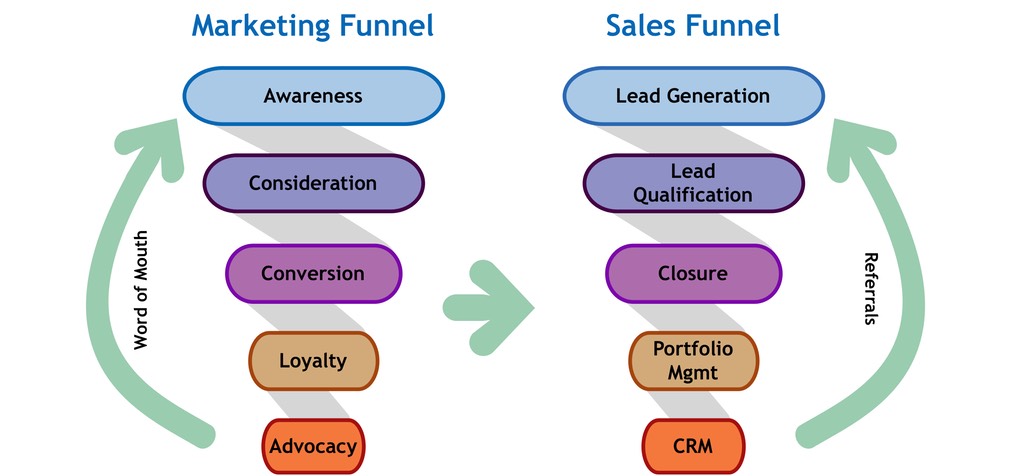by Karen Newcombe
For the third time in three weeks I've had a long conversation with someone about whether sales and marketing are different and, if so, how they are supposed to work together.
Time for a few charts! I found a good one at economywatch.com and have recreated it here to illustrate our discussion*. This chart shows how marketing and sales have traditionally related to each other using the funnel diagram, which dates back to 1898, when E. Elmo St. Louis first diagrammed how a customer journeyed through the sales process. The terms here are contemporary ones, and this funnel has been updated to 21st century terminology, but the basic concepts have been around for a long time:
In the simplest terms, marketing is everything you do that spreads awareness about your services or products to prepare your clients for buying. Sales traditionally includes all your customer contact activities that result in a signed contracts or orders.
Marketing activities include:
- Brand development
- Thought leadership: articles, books, workshops, conference presentations, white papers, newsletters, blogs – all media where your expertise, opinions, and positions are expressed
- Marketing strategy
- Media and public relations
- Collateral materials: brochures, direct mail, websites
- Responding to RFPs with proposals and qualifications
- How your firm answers the phone, what your office looks like, how satisfied your staff is with their work, what you give back to the community, etc.
- Customer loyalty expressed via word of mouth
Sales activities include:
- Identifying and qualifying leads
- Direct contact with prospects that results in signed contracts
- Client interviews/presentations once you've been short-listed
- Negotiations and closing
- Managing your portfolio of current and past clients to maintain ongoing relationships
- Directing your customer relationships so as to result in referrals for new work
The traditional process went something like this: You need a new computer. You drive over to Computer Planet and ask a friendly sales person to explain the various models. He or she asks you some questions about your computer use, and makes a recommendation or two. You pick one, pay the cashier and load your computer in the car.
This process probably didn't change much from 50,000 B.C. until the late 1990s, but change it has, and in big ways. Buying is a completely different, non-linear process today.
Customers today no longer rely on the salesperson to guide them to an appropriate purchase and this change in buying has created a huge change in marketing.
I'll talk about why in Part 2, and offer some ideas about how your firm can respond to this change.
*Chart Sources: The New Marketing Funnel by Adam Cohen, and an updated version, Marketing Funnel vs. Sales Activities by Keith Timimi and Shin-Wee Chuang.

